Drosophilia
From lab experiment to artwork: the journey of a humble fruit fly.
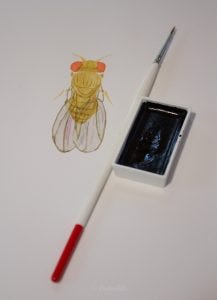
Preliminary watercolor of my fly. Pictured with an 0 sable brush and pan of paint.
Today in our last hands-on molecular techniques lab, we were counting flies. But first, we put them to sleep. Not permanently! No, we knocked them out (eventually. Perky little buggers) with an odd-smelling FlyNap, and then we tipped them onto paper and counted them, sorting by phenotypic characteristics. It was an interesting experiment in genetics, one that had begun six weeks before in our professor's lab. The flies had been carefully bred, hybridized, and finally handed over in vials to us students, so we can look at dihybrids and independent assortment in a more tangible way than symbols on a blackboard.
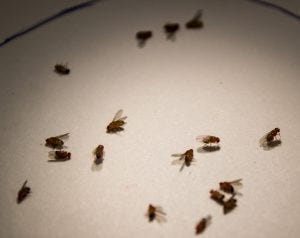
Sleeping flies.
Along the way, I was struck by the beautiful structure of the tiny fruit flies. Under ordinary circumstances, if we think about Drosophilia melanogaster, it's to figure out how to get rid of a persistent kitchen infestation that hitch-hiked in on a bunch of bananas. Drosophilia, whose name means literally "Dew Lover" is a pest in the kitchen, but a boon to geneticists who have used it for experiments like this one to prove genetic hybridization hypotheses. Easy to raise in large numbers (as anyone who has had them in the kitchen can attest), cheap to keep, and quick generational reproduction make the fly ideal for genetics research. Mutations such as white-eye, wingless, crumple wings, sepia eye... they can all be used to show that independent genes occur in predictable ratios as the phenotypes are readily visible.
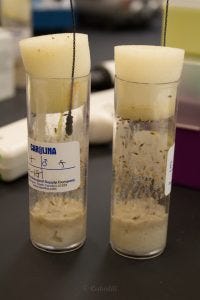
Tubes full of fermenting fruit-paste and flies.
After learning last week that I could use my phone to take pictures through the microscope, I attempted photography with my tablet, which has a much better camera. I was delighted to be quite successful.
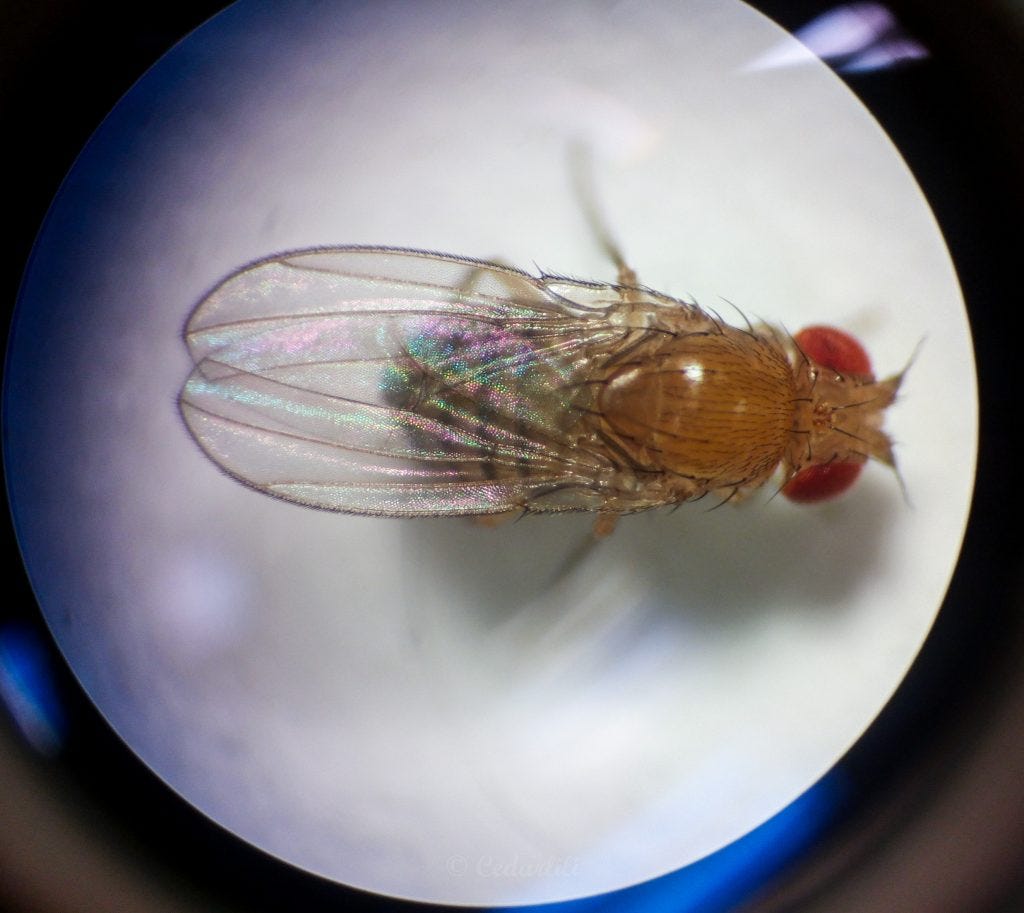
Wild-type fly, all visible features are non-mutated.
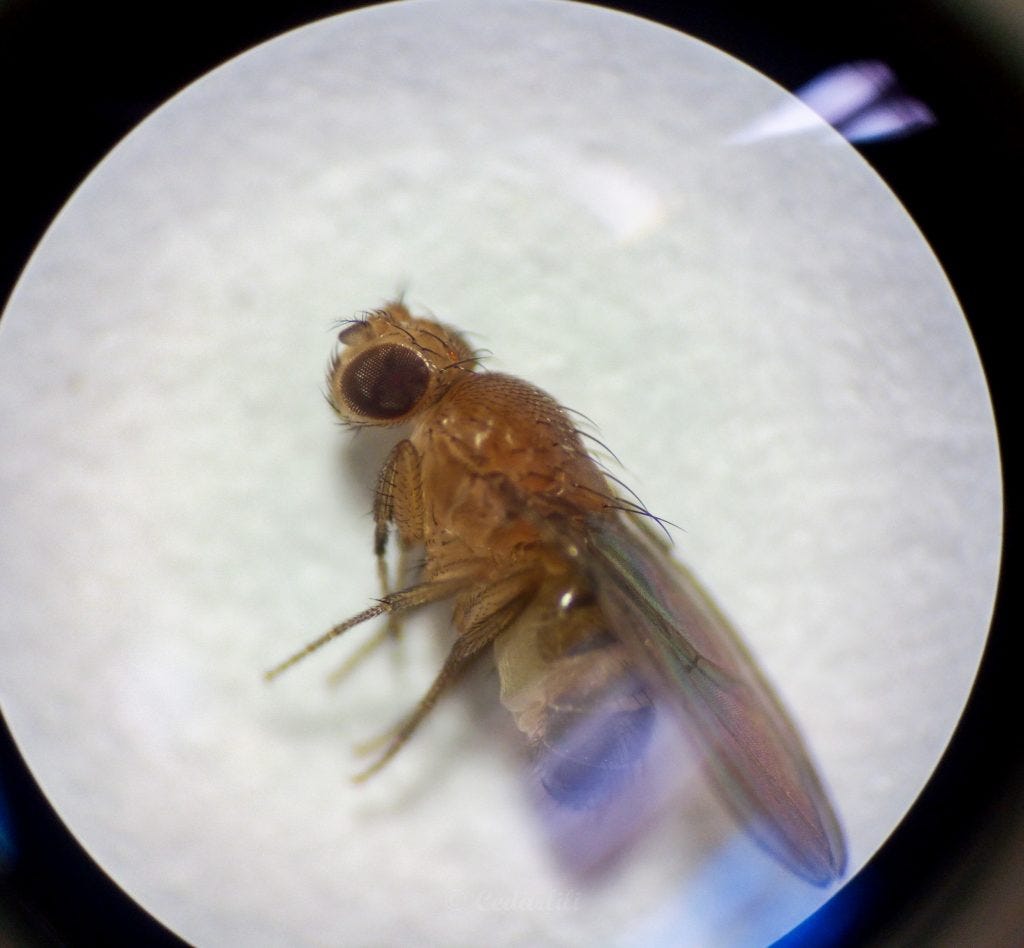
Sepia-Eyed Drosophilia - there's no affect to the vision.
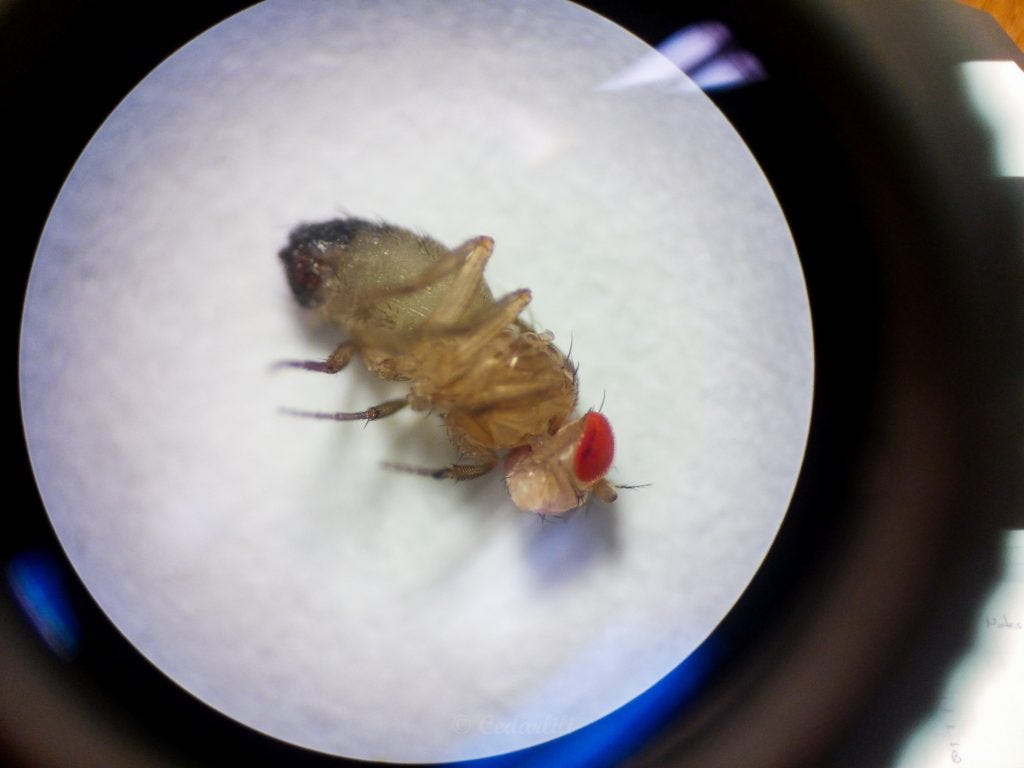
Wingless Drosophilia
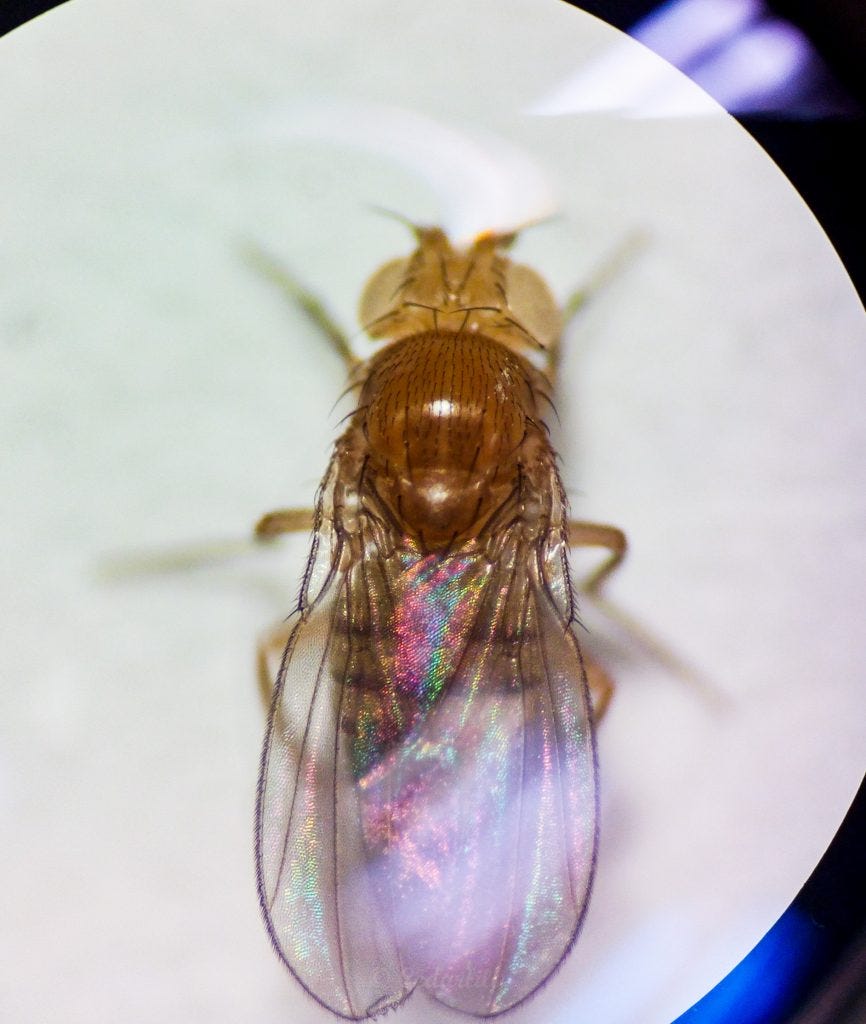
White-eyed female drosophilia (females have a black tipped abdomen).
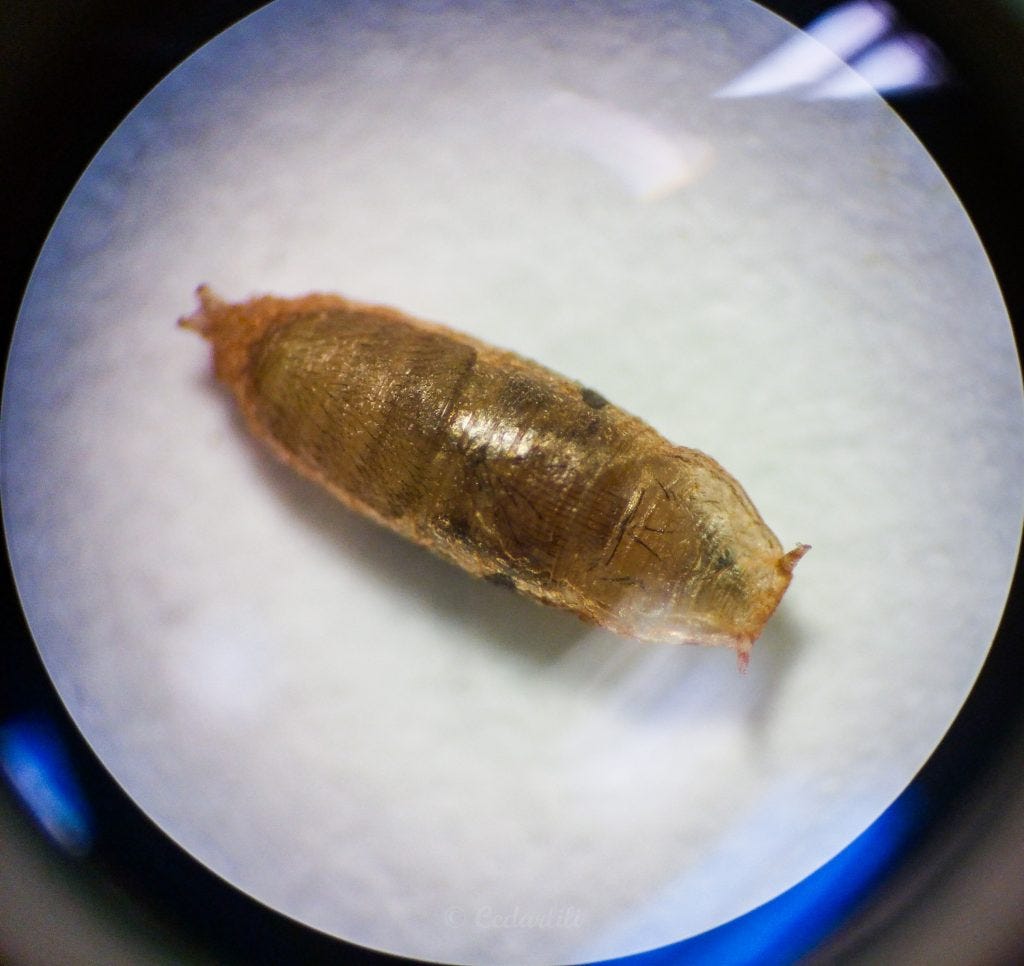
Drosophilia Pupa
I was so inspired by this, that I came home and decided to paint a fly. I chose the wild-type to start, but I may do the others as well and have a little mutant series of illustrations. This was painted with Kuretake watercolor paints on 98 lb paper, with highlights in white gel pen.
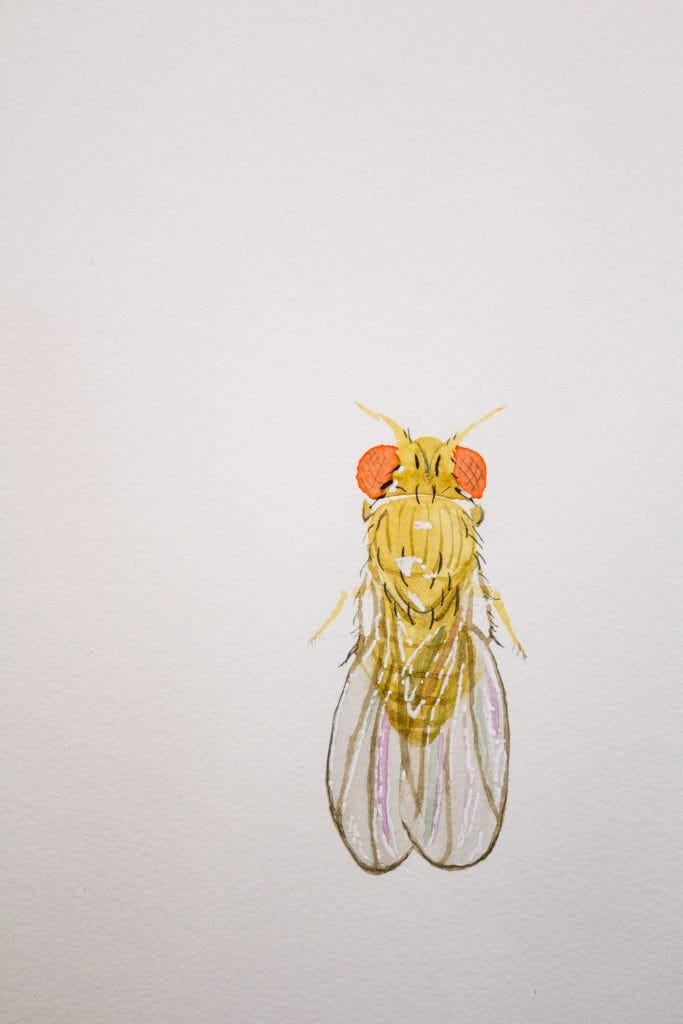
The finished watercolor of a wild-type Drosophilia melanogaster




